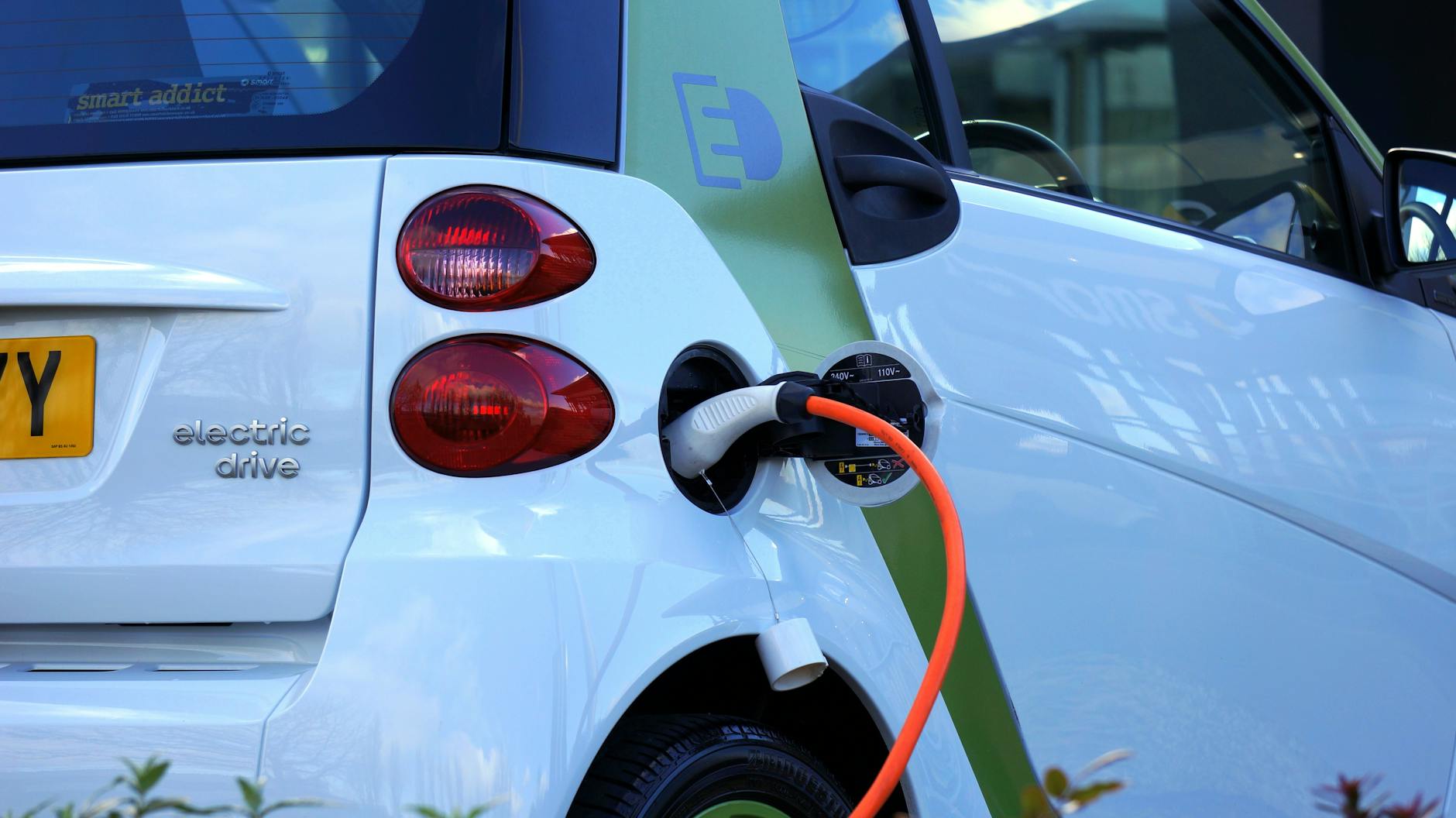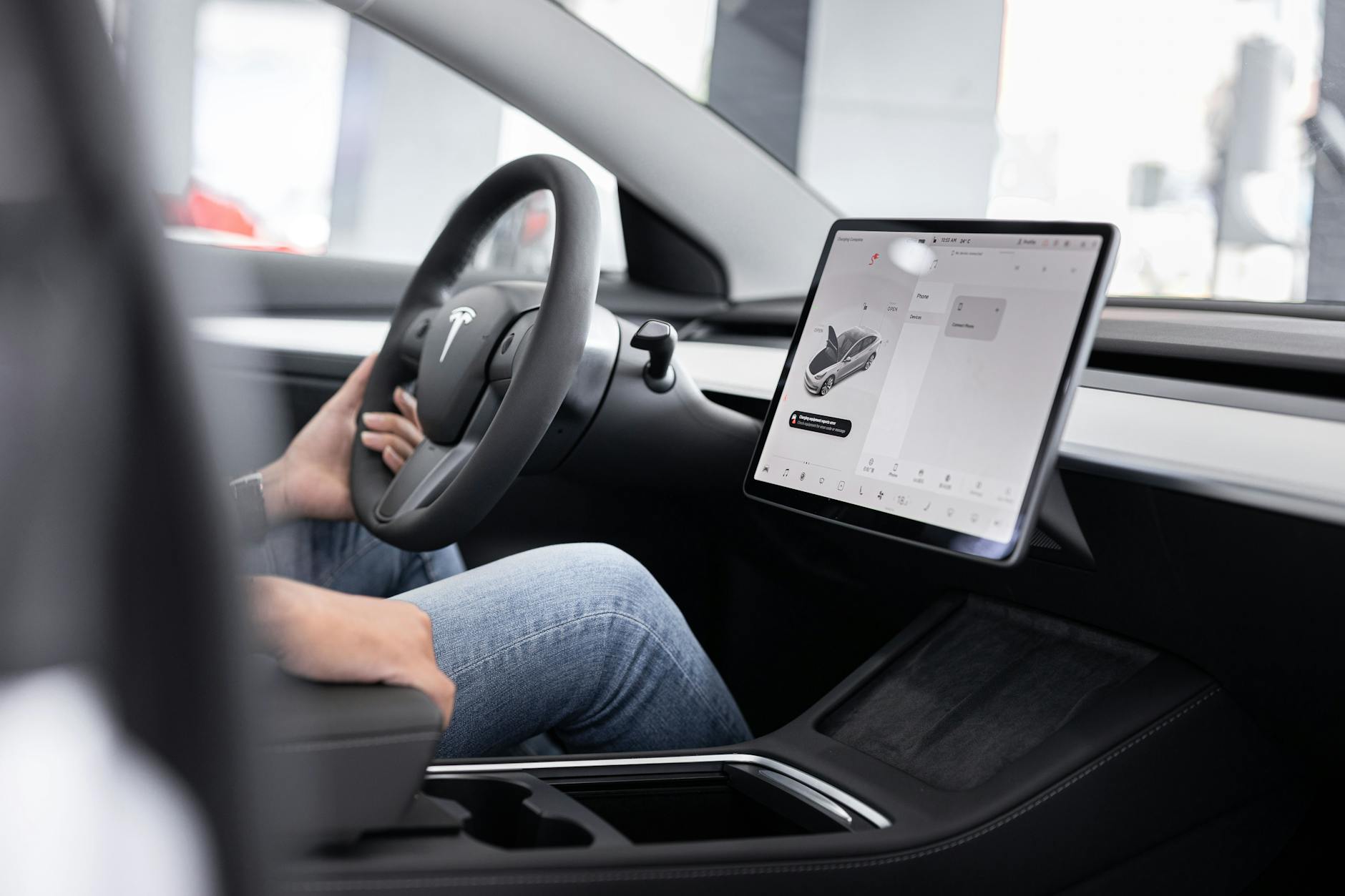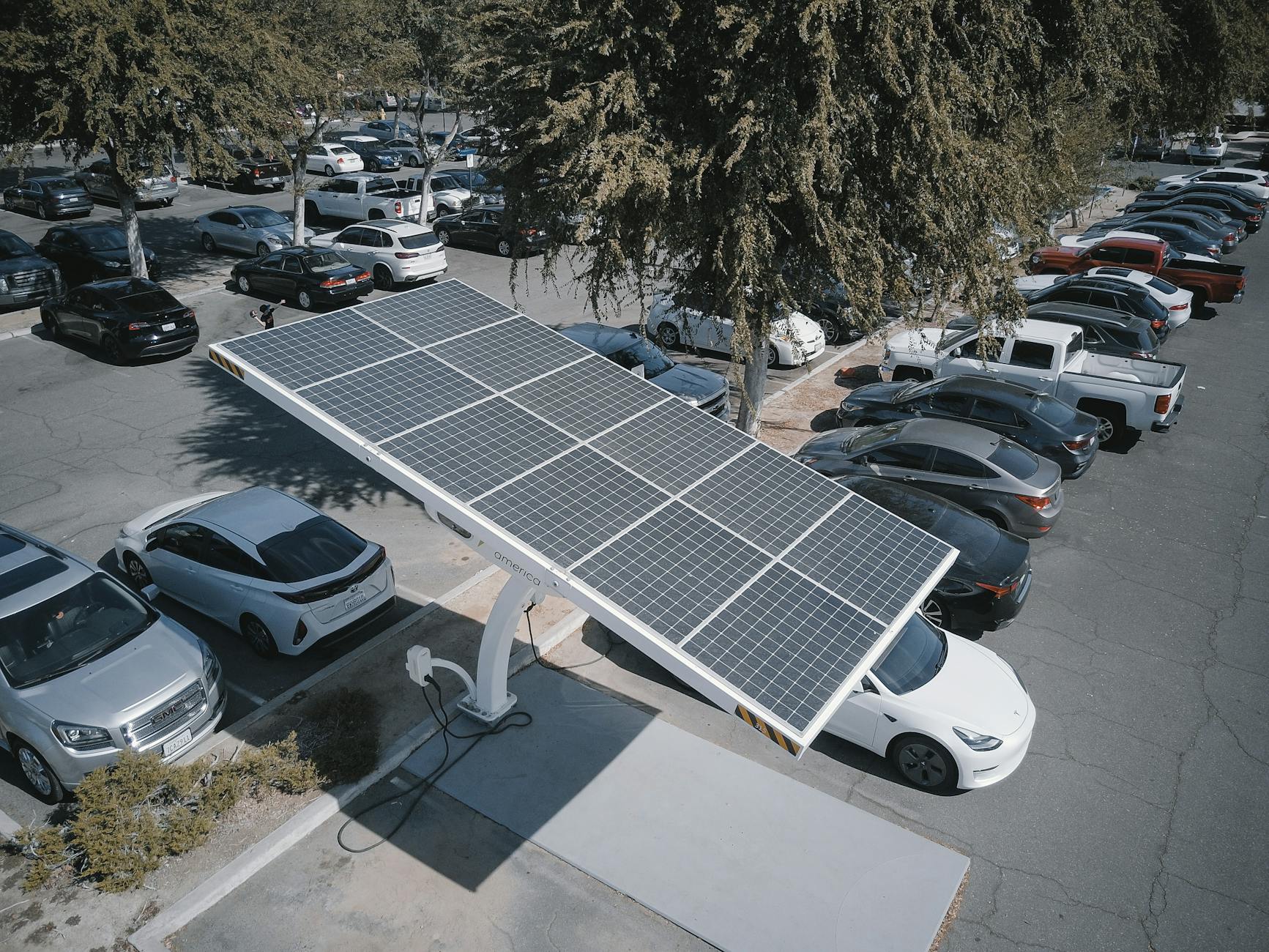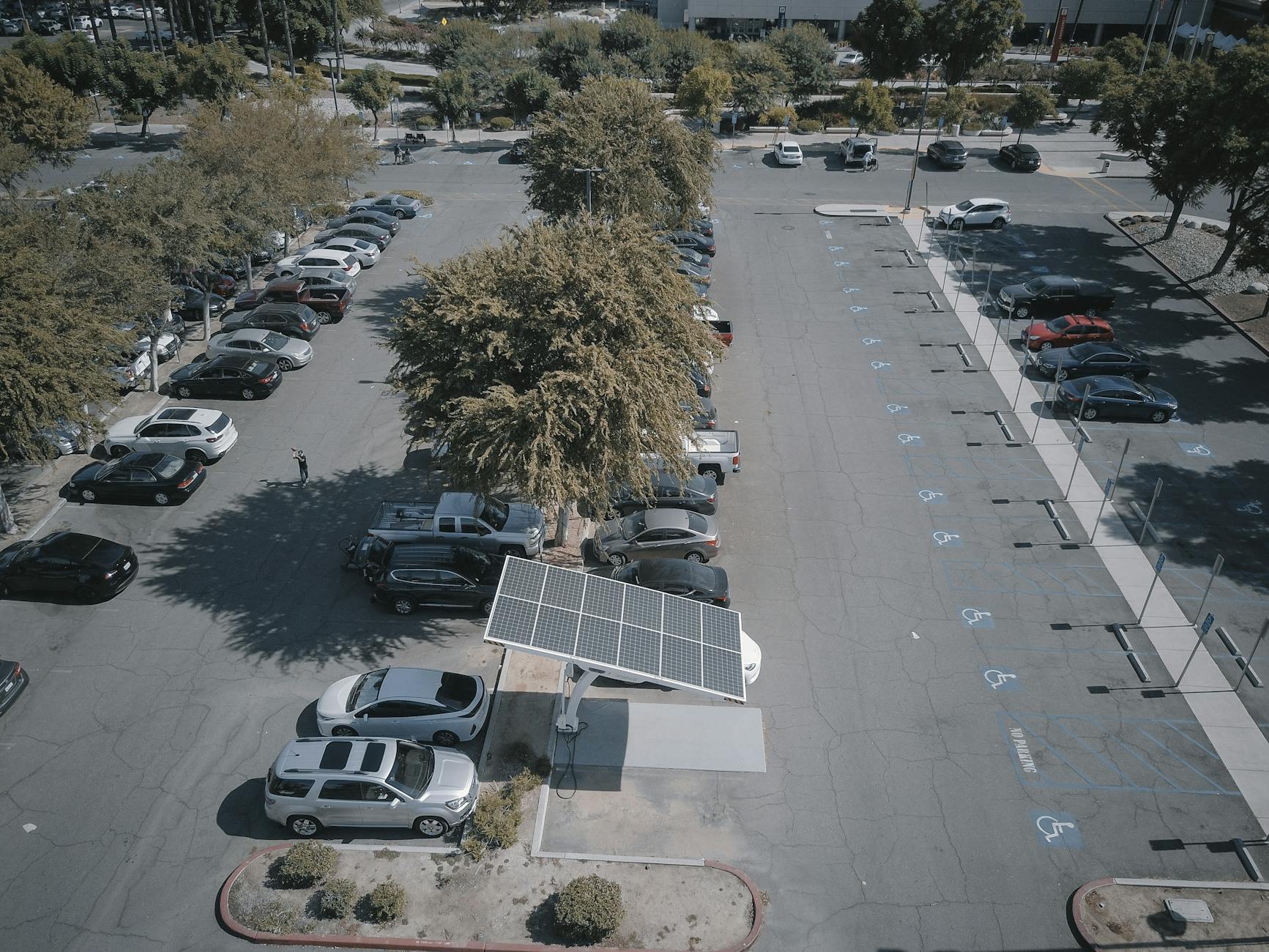Picture this: A bustling American city where the streets hum with the quiet whir of electric motors instead of the roar of gas engines. 🚗⚡ This isn’t a scene from a futuristic movie—it’s a glimpse into the not-so-distant future of transportation in America. The electric vehicle (EV) revolution is charging ahead at full speed, promising to reshape our roads, our economy, and our environment.
But what’s driving this electrifying change? From cutting-edge battery technology to government incentives, the landscape of American transportation is undergoing a seismic shift. As gas prices fluctuate and climate concerns intensify, more Americans are plugging into the idea of EVs. Yet, questions remain: Are we ready for this electric evolution? What challenges lie ahead on this road to a greener future?
In this post, we’ll explore the current state of electric vehicles in America and peek under the hood at the technological advancements propelling their adoption. We’ll examine the government policies energizing the market, the economic ripple effects of this transition, and the environmental benefits that could clear the air—literally. Buckle up as we navigate the challenges, opportunities, and future projections of the EV market in America. It’s time to get charged up about the future of transportation! 🔋🚀
Current state of electric vehicles in America

Market share and growth trends
The electric vehicle (EV) market in America has experienced significant growth in recent years. As of 2023, EVs account for approximately 7% of new vehicle sales in the United States, marking a substantial increase from just 2% in 2020. This rapid growth can be attributed to several factors, including improved technology, increased consumer awareness, and supportive government policies.
Here’s a breakdown of EV market share growth over the past few years:
| Year | EV Market Share |
|---|---|
| 2020 | 2% |
| 2021 | 4% |
| 2022 | 5.8% |
| 2023 | 7% |
The compound annual growth rate (CAGR) for EV sales in the US is projected to be around 25-30% over the next five years, indicating a strong upward trend in adoption.
Popular EV models and manufacturers
Several manufacturers have established themselves as leaders in the American EV market. The most prominent players include:
- Tesla: Dominating the market with models like the Model 3, Model Y, and Model S
- Ford: Gaining traction with the Mustang Mach-E and F-150 Lightning
- General Motors: Offering the Chevrolet Bolt EV and GMC Hummer EV
- Nissan: Known for the long-standing Leaf model
- Volkswagen: Entering the market with the ID.4
Tesla continues to lead the pack, accounting for over 60% of EV sales in the US. However, traditional automakers are rapidly expanding their EV offerings, intensifying competition in the market.
Charging infrastructure development
The growth of EV adoption is closely tied to the development of charging infrastructure. As of 2023, there are approximately 140,000 public charging stations across the United States, with plans to significantly expand this number in the coming years.
Key aspects of charging infrastructure development include:
- Fast-charging networks: Companies like Tesla, Electrify America, and EVgo are expanding their fast-charging networks along major highways and in urban areas.
- Home charging solutions: Many EV owners opt for home charging stations, with government incentives often available for installation.
- Workplace charging: An increasing number of employers are offering charging stations as an employee benefit.
- Public-private partnerships: Collaborations between government agencies and private companies are accelerating the deployment of charging stations in public spaces.
Despite this progress, the current charging infrastructure still faces challenges in meeting the growing demand. The Biden administration has set a goal of installing 500,000 new public charging stations by 2030, which would significantly boost the nation’s charging capacity.
As we move forward, the expansion of charging infrastructure will play a crucial role in supporting the continued growth of EV adoption in America. With this foundation in place, let’s explore the technological advancements that are further driving the EV revolution.
Technological advancements driving EV adoption

Battery innovations and improved range
As electric vehicles (EVs) continue to gain traction in the American market, battery technology has become a crucial factor in driving adoption. Recent advancements have significantly improved EV range, addressing one of the primary concerns for potential buyers.
Lithium-ion vs. Solid-state batteries
| Battery Type | Energy Density | Charging Time | Safety | Cost |
|---|---|---|---|---|
| Lithium-ion | Moderate | 30-60 minutes | Good | Lower |
| Solid-state | High | 10-15 minutes | Excellent | Higher |
While lithium-ion batteries have been the standard for EVs, solid-state batteries are emerging as a game-changing technology. These batteries offer higher energy density, faster charging times, and improved safety features. Several major automakers are investing heavily in solid-state battery research and development, with some projecting commercial availability within the next 5-7 years.
Fast-charging capabilities
The ability to quickly charge EVs is another technological advancement driving adoption. Fast-charging stations are becoming increasingly prevalent across America, making long-distance travel more feasible for EV owners. Some key developments include:
- Ultra-fast charging: New technologies allow for charging rates of up to 350 kW, potentially adding 200 miles of range in just 10 minutes.
- Wireless charging: Pilot programs are testing inductive charging pads embedded in roads, allowing EVs to charge while driving.
- Smart charging algorithms: AI-powered systems optimize charging times and rates, reducing strain on the power grid and lowering costs for consumers.
Enhanced safety features
Electric vehicles are inherently safer than their internal combustion engine counterparts due to their lower center of gravity and absence of flammable fuel. However, recent technological advancements have further improved EV safety:
- Advanced driver assistance systems (ADAS)
- Improved battery thermal management
- Reinforced battery enclosures
- Enhanced pedestrian alert systems
These features not only make EVs safer for occupants but also address concerns about battery fires and pedestrian safety.
Autonomous driving integration
The integration of autonomous driving technology with electric vehicles is paving the way for a revolutionary transportation landscape. Key advancements include:
- LiDAR sensors: Providing more accurate environmental mapping
- AI-powered decision-making systems: Enhancing vehicle responsiveness and safety
- Vehicle-to-everything (V2X) communication: Allowing EVs to interact with infrastructure and other vehicles
As these technologies continue to evolve, we can expect to see a significant increase in EV adoption rates. The combination of extended range, faster charging times, enhanced safety features, and autonomous capabilities is making electric vehicles an increasingly attractive option for American consumers.
Government policies and incentives

Federal tax credits and rebates
The United States government has implemented various financial incentives to encourage the adoption of electric vehicles (EVs). These incentives play a crucial role in making EVs more affordable and attractive to consumers.
One of the most significant federal incentives is the Qualified Plug-in Electric Drive Motor Vehicle Credit, which offers a tax credit of up to $7,500 for eligible EVs. This credit is based on the vehicle’s battery capacity and is available for both battery electric vehicles (BEVs) and plug-in hybrid electric vehicles (PHEVs).
Here’s a breakdown of the federal tax credit structure:
| Battery Capacity | Maximum Tax Credit |
|---|---|
| 5 kWh to 16 kWh | $2,500 to $7,500 |
| 16 kWh and above | $7,500 |
It’s important to note that these credits phase out once a manufacturer has sold 200,000 qualifying vehicles. Some automakers, like Tesla and General Motors, have already reached this threshold.
In addition to tax credits, the federal government also offers other incentives:
- Charging infrastructure tax credit: Up to 30% of the cost (maximum $30,000) for installing EV charging stations
- Alternative Fuel Vehicle Refueling Property Credit: Covers up to 30% of the cost of installing alternative fuel vehicle refueling property
State-level initiatives
While federal incentives provide a solid foundation for EV adoption, many states have implemented their own programs to further encourage the transition to electric vehicles. These state-level initiatives vary widely but often include:
- Additional rebates or tax credits
- HOV lane access for EVs
- Reduced registration fees
- Utility rate reductions for EV charging
For example, California, a leader in EV adoption, offers the Clean Vehicle Rebate Project (CVRP), which provides rebates of up to $7,000 for eligible EVs. Other states like Colorado, New Jersey, and Oregon also offer substantial incentives.
Here’s a comparison of EV incentives in some leading states:
| State | Rebate/Tax Credit | Additional Perks |
|---|---|---|
| California | Up to $7,000 | HOV lane access, reduced utility rates |
| Colorado | Up to $5,000 | EV charging station incentives |
| New Jersey | Up to $5,000 | Sales tax exemption |
| Oregon | Up to $2,500 | Charge Ahead rebate for low-income buyers |
Emissions regulations impact on EV market
Stringent emissions regulations have played a significant role in driving EV adoption and shaping the future of the automotive industry. These regulations, both at the federal and state levels, are pushing automakers to produce more fuel-efficient and low-emission vehicles.
The Corporate Average Fuel Economy (CAFE) standards, set by the National Highway Traffic Safety Administration (NHTSA), require automakers to improve the overall fuel economy of their vehicle fleets. This has led many manufacturers to invest heavily in EV technology to meet these standards.
Additionally, several states have adopted California’s Zero Emission Vehicle (ZEV) program, which requires automakers to produce a certain percentage of zero-emission vehicles. This program has been instrumental in driving EV production and sales in participating states.
The impact of these regulations on the EV market includes:
- Increased investment in EV technology by automakers
- Wider variety of EV models available to consumers
- Improved battery technology and range
- Lower production costs due to economies of scale
As we move forward, these government policies and incentives will continue to play a crucial role in shaping the future of electric vehicles in America. The combination of federal tax credits, state-level initiatives, and emissions regulations creates a favorable environment for EV growth and adoption.
Economic implications of EV expansion

Job creation in EV manufacturing and related industries
The expansion of electric vehicles (EVs) in America is set to create a significant number of jobs across various sectors. As the demand for EVs grows, manufacturers are ramping up production, leading to increased employment opportunities in assembly plants, battery production facilities, and component manufacturing.
- Direct manufacturing jobs: Assembly line workers, engineers, and technicians
- Indirect jobs: Suppliers, logistics, and distribution
- Ancillary industries: Charging infrastructure installation and maintenance
According to a recent study, the EV industry is projected to create over 2 million jobs in the United States by 2030. This includes both new positions and transformed roles from traditional automotive manufacturing.
Shift in automotive industry landscape
The rise of EVs is reshaping the entire automotive industry landscape. Traditional automakers are pivoting towards electric vehicles, while new players are entering the market with innovative EV-only models.
| Aspect | Traditional Auto Industry | EV-Driven Auto Industry |
|---|---|---|
| Focus | Internal combustion engines | Electric powertrains |
| Supply chain | Established, complex | Evolving, simplified |
| Skills required | Mechanical engineering | Electrical engineering, software development |
| Product lifecycle | Longer | Shorter, with frequent updates |
| Market leaders | Legacy automakers | Mix of established and new companies |
This shift is driving investments in research and development, as well as retraining programs for workers to adapt to new technologies and manufacturing processes.
Impact on oil and gas sector
The widespread adoption of EVs will undoubtedly have a significant impact on the oil and gas sector. As more consumers switch to electric vehicles, the demand for gasoline is expected to decrease, potentially leading to:
- Reduced revenue for oil companies and refineries
- Job losses in traditional fuel-related industries
- Shift in energy production towards renewable sources
However, this transition also presents opportunities for oil and gas companies to diversify their portfolios:
- Investing in EV charging infrastructure
- Developing advanced lubricants for EVs
- Exploring battery technology and energy storage solutions
While the impact on the oil and gas sector may seem challenging, it’s important to note that the transition to EVs will be gradual, allowing companies time to adapt and evolve their business models.
As we look at the economic implications of EV expansion, it’s clear that the automotive industry is undergoing a significant transformation. This shift not only affects job markets and industry landscapes but also has far-reaching environmental implications, which we’ll explore in the next section.
Environmental benefits of widespread EV adoption

Reduction in greenhouse gas emissions
Electric vehicles (EVs) are poised to play a crucial role in reducing greenhouse gas emissions in America. As the transportation sector is one of the largest contributors to carbon emissions, the widespread adoption of EVs can significantly decrease our carbon footprint.
- EVs produce zero direct emissions
- Lifecycle emissions of EVs are lower than traditional vehicles
- Potential for even greater reductions as the power grid becomes cleaner
According to recent studies, the average EV in America produces about 4,100 pounds of CO2 equivalent per year, compared to 11,435 pounds for gasoline-powered vehicles. This represents a reduction of over 60% in greenhouse gas emissions.
| Vehicle Type | Annual CO2 Equivalent Emissions |
|---|---|
| Electric | 4,100 pounds |
| Gasoline | 11,435 pounds |
Improved air quality in urban areas
The shift towards electric vehicles has a direct and positive impact on air quality, particularly in densely populated urban areas. By eliminating tailpipe emissions, EVs contribute to cleaner and healthier cities.
- Reduction in harmful pollutants such as nitrogen oxides and particulate matter
- Decreased smog formation in metropolitan areas
- Potential health benefits for urban residents, including reduced respiratory issues
A study by the American Lung Association estimates that a widespread transition to EVs could prevent up to 6,300 premature deaths and 93,000 asthma attacks annually in the United States by 2050.
Renewable energy integration with EV charging
The environmental benefits of EVs are further amplified when coupled with renewable energy sources for charging. This synergy between clean transportation and clean energy production creates a powerful combination for sustainability.
- Solar and wind energy can be used to charge EVs, creating a zero-emission cycle
- EVs can act as mobile energy storage units, supporting grid stability
- Smart charging technologies can optimize EV charging to coincide with peak renewable energy production
As we continue to expand our renewable energy infrastructure, the environmental benefits of EVs will only increase. The U.S. Department of Energy projects that by 2050, up to 80% of electricity could come from renewable sources, making EV charging even cleaner.
The environmental benefits of widespread EV adoption extend beyond just reducing emissions. They represent a fundamental shift towards a more sustainable and cleaner transportation system. As we look towards the future, it’s clear that electric vehicles will play a pivotal role in addressing climate change and improving air quality in our cities. With these significant environmental advantages in mind, let’s explore the challenges and opportunities that lie ahead for EV growth in America.
Challenges and opportunities for EV growth

Range anxiety and public perception
One of the most significant challenges facing the widespread adoption of electric vehicles (EVs) in America is range anxiety and public perception. Range anxiety refers to the fear that an EV will run out of power before reaching its destination or a charging station. This concern, while often exaggerated, remains a major hurdle in convincing consumers to switch from traditional gas-powered vehicles.
To address this issue, automakers and policymakers are working on several fronts:
- Improving battery technology
- Expanding charging infrastructure
- Educating the public about EV capabilities
Here’s a comparison of average EV ranges over the years:
| Year | Average EV Range (miles) |
|---|---|
| 2010 | 70 |
| 2015 | 150 |
| 2020 | 250 |
| 2025 (projected) | 350 |
As battery technology continues to improve, range anxiety is expected to diminish. However, public perception remains a challenge. Many consumers still hold outdated beliefs about EVs, such as:
- Limited range
- Long charging times
- High costs
- Limited model options
To combat these misconceptions, automakers and governments are investing in public education campaigns and offering test drive programs to familiarize consumers with EV technology.
Grid infrastructure upgrades
The transition to widespread EV adoption will require significant upgrades to the existing power grid infrastructure. As more EVs hit the roads, the demand for electricity will increase, potentially straining the current system. To address this challenge, several key initiatives are underway:
- Smart grid technology implementation
- Renewable energy integration
- Load balancing and demand response systems
- Expanded charging infrastructure
These upgrades will not only support the growing EV market but also improve overall grid reliability and efficiency.
Raw material sourcing for battery production
The production of EV batteries relies heavily on specific raw materials, such as lithium, cobalt, and nickel. As demand for EVs grows, securing a stable and sustainable supply of these materials becomes crucial. This challenge presents both obstacles and opportunities:
-
Obstacles:
- Limited global supply of certain materials
- Geopolitical tensions affecting supply chains
- Environmental concerns related to mining practices
-
Opportunities:
- Development of new mining technologies
- Recycling and circular economy initiatives
- Research into alternative battery chemistries
Addressing these challenges will be essential for ensuring the long-term sustainability and scalability of EV production.
Potential for vehicle-to-grid technology
Vehicle-to-grid (V2G) technology represents an exciting opportunity in the EV landscape. This innovative approach allows EVs to not only draw power from the grid but also feed excess energy back into it. The potential benefits of V2G technology include:
- Grid stabilization during peak demand periods
- Increased integration of renewable energy sources
- Potential cost savings for EV owners
- Enhanced overall grid resilience
While V2G technology is still in its early stages, it has the potential to revolutionize the relationship between EVs and the power grid, creating a more dynamic and efficient energy ecosystem.
As we move forward, addressing these challenges and capitalizing on the opportunities they present will be crucial for the continued growth and success of the EV market in America. The next section will explore future projections for the EV market, taking into account these challenges and opportunities.
Future projections for EV market in America

Sales forecasts and market penetration estimates
The future of electric vehicles (EVs) in America looks incredibly promising, with sales forecasts and market penetration estimates painting a picture of rapid growth and widespread adoption. According to industry experts, the EV market is expected to experience exponential growth over the next decade.
Here’s a breakdown of projected EV market penetration in the United States:
| Year | Projected EV Market Share |
|---|---|
| 2025 | 15-20% |
| 2030 | 30-40% |
| 2035 | 50-60% |
| 2040 | 70-80% |
These projections are based on several factors, including:
- Advancements in battery technology
- Expanding charging infrastructure
- Increasing consumer awareness and acceptance
- Government incentives and regulations
Timeline for EV cost parity with traditional vehicles
One of the most significant barriers to EV adoption has been the higher upfront cost compared to traditional internal combustion engine (ICE) vehicles. However, this gap is rapidly closing, and cost parity is on the horizon.
Experts predict that EVs will reach cost parity with ICE vehicles in the following timeline:
- 2025: Small and mid-size passenger vehicles
- 2027: SUVs and crossovers
- 2030: Light-duty trucks and vans
This timeline is driven by several factors:
- Decreasing battery costs
- Economies of scale in production
- Technological improvements in manufacturing processes
- Increased competition among EV manufacturers
Potential impact on public transportation and ride-sharing
The rise of EVs is not limited to personal vehicles; it’s also set to revolutionize public transportation and ride-sharing services. Here’s how:
-
Public Transportation:
- Cities are increasingly investing in electric buses and trains
- Reduced operating costs and environmental impact
- Improved air quality in urban areas
-
Ride-sharing:
- Major ride-sharing companies are committing to all-electric fleets
- Lower maintenance costs for drivers
- Enhanced user experience with quieter, cleaner vehicles
The integration of EVs into public transportation and ride-sharing services is expected to accelerate EV adoption by:
- Increasing public exposure to EVs
- Demonstrating the reliability and practicality of electric vehicles
- Creating a demand for more charging infrastructure
As we look ahead, it’s clear that the EV market in America is poised for significant growth. With improving technology, decreasing costs, and increasing support from both the public and private sectors, electric vehicles are set to become the norm rather than the exception in the coming years.
